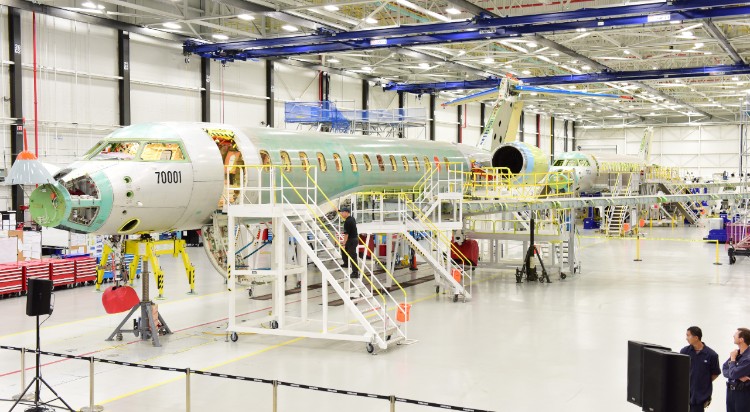From Market Panic to Aerospace Potential—Making Sense of US-Canada Trade Tensions
Market Panic: US Tariffs in Aerospace—When markets plunge by more than a thousand points in one morning, it’s easy to panic. Headlines scream ‘CRISIS,’ analysts sound alarm bells, and investors start feeling that familiar sense of dread. But let’s pause, take a deep breath, and try to understand what’s really going on.
Today’s panic isn’t just about tariffs—it’s fundamentally about uncertainty. Markets hate uncertainty even more than they dislike outright bad news, and right now, we’ve plenty of uncertainty to contend with.
Market Panic US Tariffs Aerospace: What’s Really Happening?
President Trump announced broad and aggressive new tariffs:
- A baseline 10% tariff on almost all imports.
- Targeted tariffs, notably a steep 34% on Chinese goods, bringing the cumulative tariffs on China to over 50%.
Moves like this naturally spark fears of retaliation, supply chain disruptions, rising inflation, and potential job losses. But the biggest issue right now is that we simply don’t have precise details about what exactly is going to happen, and markets are filling in those blanks with fear.
Why Markets Are Freaking Out
The current sell-off isn’t really about the tariffs themselves—it’s about:
- Uncertainty and confusion about exactly how these tariffs will be implemented.
- Fears of escalating trade wars with key partners that could drag on for years.
- Media-driven panic, where sensationalism often takes precedence over clear explanations.
Communication Breakdown
Here’s where I see a big problem: the administration can’t effectively explain its policies directly to the public because media channels have their own political agendas. Every major outlet spins stories to fit a particular narrative, leaving the President without a fair chance to address the American people directly. I’ve been closely following Bloomberg TV’s interview with Secretary of Commerce Howard Lutnick, and even there, you can detect subtle biases in how issues are discussed.
We urgently need straightforward communication from the administration to explain why these tariffs are necessary, how they’ll be implemented, and what measures (corporate tax cuts, personal tax relief, re-skilling programs) will offset any immediate negative impacts.
Historical Context: Should We Calm Down?
Historically, markets often overreact to policy shocks, only to recover quickly once clarity returns. Remember Brexit? Initially, there was panic and predictions of catastrophe. However, markets adjusted as details emerged, and life continued. Similarly, during previous U.S.-China trade conflicts, initial drops were followed by rapid recoveries when deals were clarified.
See also: Canada’s Gold Reserves Sell-Off
Real Questions Moving Forward
The critical questions now are:
- How quickly will the administration clarify its policies?
- Which industries will be genuinely disrupted, and which ones might actually benefit?
- How soon can the markets stabilize with better communication?
Innovation Amid Market Panic US Tariffs Aerospace: Industry Opportunities
Market Panic: US Tariffs Aerospace Scenarios Aren’t All Negative; They Can Stimulate Innovation. For aerospace suppliers—particularly smaller, specialized companies in Canada—these tariffs represent a complex scenario. On the one hand, increased tariffs could raise the cost of critical components, such as engines and avionics, predominantly sourced from the U.S. Currently, Canada’s domestic capacity to produce such high-value components independently is limited. However, the tariff pressures might incentivize significant new investments and partnerships, potentially accelerating Canada’s local aerospace manufacturing capabilities and fostering technological innovation to reduce long-term dependency on cross-border imports.
In short, aerospace companies that are prepared to adapt and innovate in response to these trade tensions could find themselves ahead of the curve, ultimately benefiting significantly in the long run.
Canada’s Own Barriers: The Path to Genuine Free Trade
While Canada often advocates free trade externally, Canada does not genuinely offer Free Trade with the U.S. It maintains significant internal and external barriers. Internally, Canadian provinces still restrict trade in many sectors:
- Alcohol Distribution: Restrictions limit the transportation of alcoholic beverages across provincial borders.
- Food and Agriculture Regulations: Inconsistent standards complicate interprovincial trade.
- Transportation and Vehicle Standards: Different provincial regulations add unnecessary costs for trucking and shipping companies.
- Professional Certification: Professionals often face challenges in having their credentials recognized in other provinces, which restricts labour mobility within Canada.
Externally, Canada retains substantial trade barriers against the U.S.:
- Dairy Supply Management: High tariff-rate quotas and pricing mechanisms protect Canadian dairy.
- Telecommunications: Restrictions limit foreign ownership to less than 33.3%.
- Financial Services: Strict regulations limit market entry and expansion, making it challenging for U.S. banks and financial institutions to freely offer their services or open new branches in Canada.
These policies weaken Canada’s bargaining position and credibility when discussing reciprocal tariff reductions with the U.S.
For Canada to genuinely benefit from free trade, it must first dismantle its internal barriers. Doing so would not only improve economic efficiency but also position Canada as a credible partner in international trade discussions. Ultimately, reducing these internal and external trade restrictions could eliminate the uncertainties currently unsettling markets, clearly demonstrating that Canada is truly ready to “walk the talk.”
Final Thoughts
Yes, today’s volatility driven by Market Panic US Tariffs Aerospace tensions feels scary. However, remember that uncertainty is more damaging than clearly defined challenges. Transparent communication could significantly calm markets, but we’re not getting that because of a fragmented media environment driven by politics and sensationalism.
So, my advice? Stay calm, stay informed, and be skeptical of sensational headlines. It almost seems as if someone wants uncertainty to shake markets. Keep your eyes open, but also keep your head. The real picture will become clearer soon enough.
For full details, please refer to our Disclaimer page.


How many local supply chain solutions for engine and avionics suppliers in Canada?
Hi! I understand my original paragraph was unclear regarding Canada’s current capabilities for engine and avionics supply chains. I’ve updated the text to better reflect the existing limitations and clarify potential future opportunities. Thanks for pointing this out!